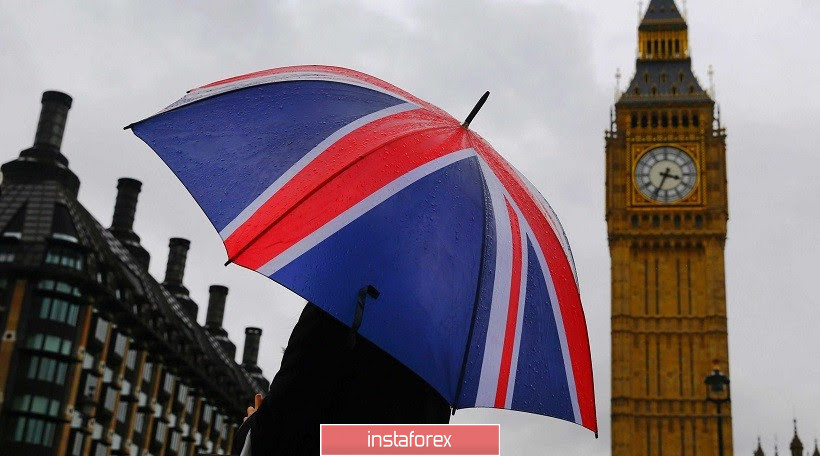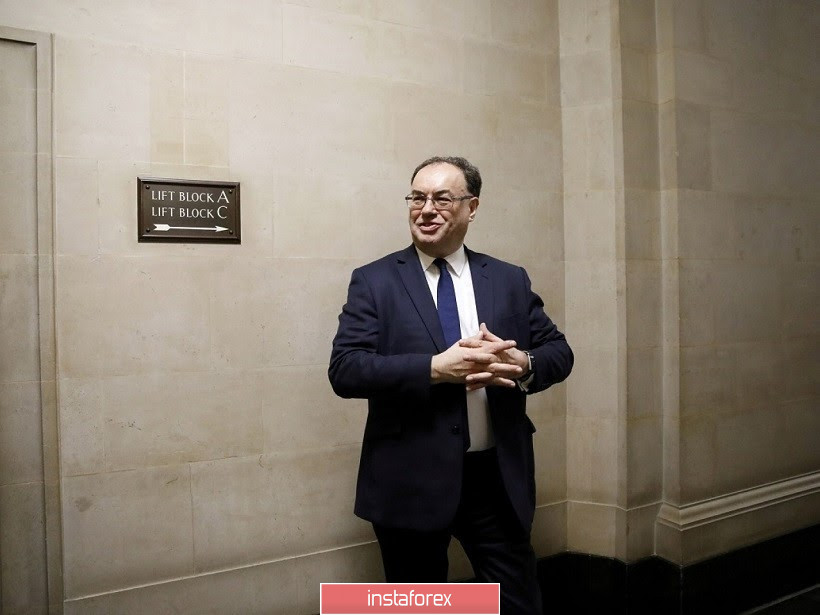According to the results of the so-called "Super Thursday", the British currency tested the 22nd figure. And although the Bank of England did not take any decisions today, the rhetoric of the English regulator put pressure on the pound. In addition, today the market reacted to the negative comments of European Commissioner for Trade Phil Hogan, who criticized the dynamics of the negotiation process between London and Brussels. All these fundamental factors turned against the GBP/USD pair, especially against the background of good positions of the US currency - the dollar index is still above the 100-point mark.

However, despite the clearly bearish mood in the pair, today's results probably disappointed both buyers and sellers. In anticipation of tomorrow's releases, traders do not risk opening large positions, preferring to be out of the market. Therefore, the bears were unable to enter the 22nd figure in order to test the nearest support level of 1.2240 (the middle line of the Bollinger Bands on the daily chart) and look at the next price barrier of 1.2150 (the lower border of the Kumo cloud on the same timeframe). Instead of a blitzkrieg, sellers were forced to slowly win back every item from buyers, approaching the indicated level of support. With a high degree of probability, traders will sell this level and go to the bottom of the 22nd figure - the British currency does not have any good reason for its growth. By and large, a correctional growth is possible only in case the dollar weakens. For this reason, many market participants are in no hurry to make trading decisions for the pair - tomorrow's Nonfarm can scare investors away from the US currency, returning GBP/USD to 1.2350 and above.
But let's start with the British events. On the one hand, the May meeting turned out to be passing. The BoE left all the parameters of monetary policy unchanged - the interest rate at around 0.10%, the amount of assets repurchased at the level of 645 billion pounds. True, there were some surprises: two members of the Committee unexpectedly voted to increase the program by 100 billion pounds. In pre-crisis times, this fact would have put significant pressure on the British currency, but now, when the country is experiencing a severe economic crisis, an increase in QE is seen by the market in the context of combating the effects of the pandemic. Therefore, immediately after the announcement of the results of the May meeting, the pair jumped to 1.2420. But the subsequent rhetoric of BoE Governor Andrew Bailey, as well as updated forecasts of the central bank enabled sellers to not only return to the 23rd figure, but also update the monthly low.
So, according to the results of the current year, the BoE predicts a decrease in the volume of GDP by almost 15% - according to economists of the central bank, this is the most significant economic slowdown since 1709, that is, over the past 311 years (Britain was then plagued by natural disasters and war). Moreover, according to the central bank, large-scale programs to stimulate the economy will not hold back the downward trend of key macroeconomic indicators - the economy will decline by 25% within three months until June, and unemployment will jump to more than 9%. As for the next year, here the BoE expects a sharp economic recovery (by more than 15%), with the weakening of coronavirus restrictions. But this will happen only if Great Britain does not face the second wave of the epidemic in the fall or winter (by the way, scientists do not exclude this scenario).
During his press conference, Bailey put additional pressure on the British currency. He said that the decision to expand QE will be made in June, when quarantine measures will be either lifted or significantly weakened. At the same time, he added that the regulator has not yet exhausted the arsenal of monetary policy instruments - "all options remain open". Bailey also quite ambiguously commented on the probability of introducing negative rates. According to him, "in the near future, there is no question of negative rates." Previously, he was more categorical regarding the reduction of rates on negative territory. And although in this case we are talking about subtle changes in verbal formulations, traders drew attention to this nuance.

In other words, the May meeting of the English regulator, although it turned out to be de facto passing, still put significant pressure on the pound. The BoE was too pessimistic in its assessments, and this affected the mood of traders. Let me remind you that just yesterday Great Britain overtook Italy in the sad anti-rating for mortality from COVID-19. Although the Cabinet of Ministers of Boris Johnson has developed a three-stage plan for the country's exit from quarantine, it did not help the pound, as the echo of the epidemic will haunt the British economy for several more months.
The European Commissioner for Trade, Phil Hogan, added fuel to the fire. Today, he said that Britain is not focused on success in trade negotiations with Brussels. In his opinion, London plans to blame the negative outcome of negotiations on future relations with the EU on a pandemic, although in fact the British are showing infantilism in the negotiation process. Such a comment put additional pressure on the pound.
Thus, the GBP/USD pair retains the potential for its decline - at least to around 1.2240 (the middle line of the Bollinger Bands on the daily chart). The next level of support is the 1.2150 mark, but in this case, care must be taken at the bottom of the 22nd figure - the 1.2200 mark may turn out to be too tough for the bears.





















